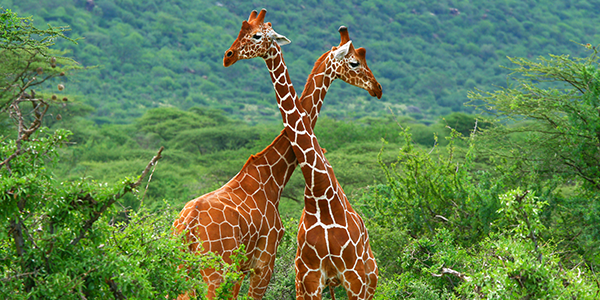
The environmental benefits provided by forests are often undervalued or ignored in conventional national accounting, with the more tangible timber products perceived to be the biggest contributor to a country’s gross domestic product (GDP), according to experts.
Governments can take the data generated by forest accounts to make better development decisions by:
- Establishing the total economic contribution of forests, market and non-market;
- Identifying the benefits from sustainable forest management versus the net cost of deforestation;
- Identifying the benefits to different stakeholders, such as commercial vs. non-commercial, including local users;
- Establishing the impact that non-forestry policies can have on forestry use, and what the trade-offs are for competing sectors such as trade, energy, or transportation
However, change is in the air as more and more countries are becoming acutely aware that forests and their related ecosystem services offer significant economic potential and that measuring and understanding their value through "forest accounts" can enable governments to set priorities, enact more effective environmental regulations, develop resource-management strategies and make budgetary allocations.
Forests are "cornerstones of our economies, whose real value has all too often been invisible in national accounts of profit and loss," said Achim Steiner, the executive director of United Nation’s Environment Programme (UNEP) at a 2011 International Year of Forests celebration.
The latest environmental and economic evidence of the forests’ vast potential comes from a recently-released report prepared for UNEP on the montane forests of Kenya (pdf), better known as Kenya’s "Water Towers," which shows that the forests’ "regulating" ecosystem services are worth nearly triple the income generated by the sale of timber products.
The report estimates that in FY2010, the timber and fuel wood revenue from the deforestation in the Kenya Water Towers generated an estimated US$ 9.1 million. However, the loss in regulating services due to the negative effects of deforestation on the economy was approximately US$ 25.5 million.
The regulating services of Kenya’s five Water Towers, which provide more than 75% of Kenya’s renewable surface water, include climate, water, erosion, natural hazard and disease regulation, and water purification and waste treatment.
"Forest accounts enable countries to capture the market and non-market contributions of forests to the economy and these can be integrated into the national accounts. This way, forest management can be optimized for development," said Glenn Marie Lange, a senior environmental economist at the World Bank and program manager of the Global Partnership for Ecosystem Valuation and Wealth Accounting (WAVES), which seeks to incorporate natural capital into national accounts for policy analysis and development planning.
Dozens of countries have now implemented or started the process of implementing forest accounts from Sweden, South Africa and Romania to Australia, and Guatemala. Some results include:
- The "indirect" services provided by Thailand’s mangroves—non-timber products, coastal protection, carbon storage and a habitat for offshore fisheries—were calculated to be worth double (more than US$20,000/hectare) the amount gained by replacing them with shrimp farms (over US$10,000/hectare) according to a 2012 study on Ecosystem Services and Wealth Accounting (pdf)
- Forest accounts in Sweden and Denmark showed that recreational uses of forests (offering places for people to walk, cycle, camp or hunt) carry a hefty economic value. In Denmark (pdf) this totaled upwards of US$20,000/hectare/year in 2005
- The value of commercial lumber in Swaziland was just one-quarter of the amount that non-market timber and timber products from natural forests could have generated for local communities, according to a 2005 report. Overall, omitted forest values would have amounted to 3% of total GDP
Guidelines for conducting forest accounts are laid out in the System for Environmental and Economic Accounts (SEEA), adopted by the UN Statistical Commission in 2012, which provides an internationally-agreed method, on par with the current System of National Accounts, to account for material natural resources like minerals, timber and fisheries in a country’s economic accounts.
Work on further developing the methodology for capturing all the regulatory services of the forest is underway. A Policy and Technical Expert Committee (PTEC) set up under the WAVES partnership, has started work on a methodology for measuring ecosystem services, including those offered by forests.
WAVES is a World-Bank facilitated partnership that was launched at the 2010 Convention on Biological Diversity in Nagoya, Japan to ensure that the national accounts used to measure and plan for economic growth include natural capital. Botswana, Colombia, Costa Rica, Madagascar, and the Philippines joined the partnership and agreed to establish and scale-up natural capital accounts. Other partners include developed countries, several UN agencies, NGOs, and academic institutions.
